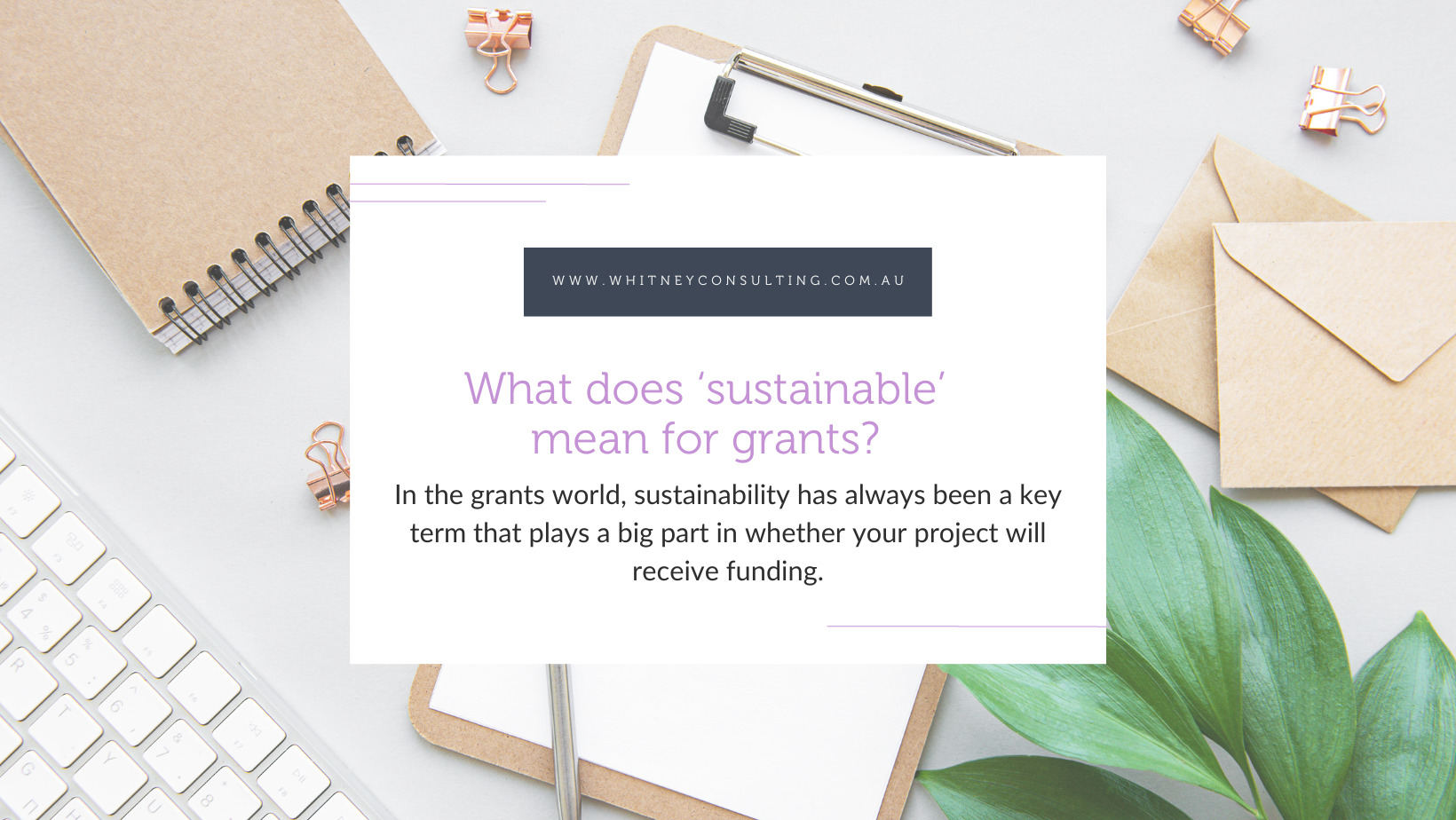The term ‘sustainability’ has become a buzz word in recent years with the increased focus on the environmental and social impacts of what we do. But in the grants world, sustainability has always been a key term that plays a big part in whether your project will receive funding.
Sustainability in grant funding means the ongoing viability of the project – once you’ve spent the money and finished doing your project – then what? How are you going to ‘sustain’ the benefits of your project?
For infrastructure projects this may be as simple as showing that the income you will receive from the use of your new piece of equipment, building, shed etc will be more than the cost of maintenance, operation of the infrastructure and the inevitable replacement of parts in the future. Or, if you are not a business, showing that there is some source of ongoing funding that will cover these costs and enable the infrastructure to continue to be used. Because why would any funding body invest in infrastructure that cannot be used?
For non-infrastructure projects it varies depending on the type of project but always relates to sustaining and continuing the benefits of doing your project. For example, if your project is a research study then what will you do with the report at the end of the project? Will you put it in a drawer for no-one to ever see (no ongoing benefits there!) – or will you extend the learnings to other organisations to be used to change practices, create new products, conduct further studies etc?
The funding body does not want to invest in any project that only delivers benefits during the funding period – they want the benefits to continue. You need to show them how this will occur if you want to secure grant funding. You need your project to be ‘sustainable’.



